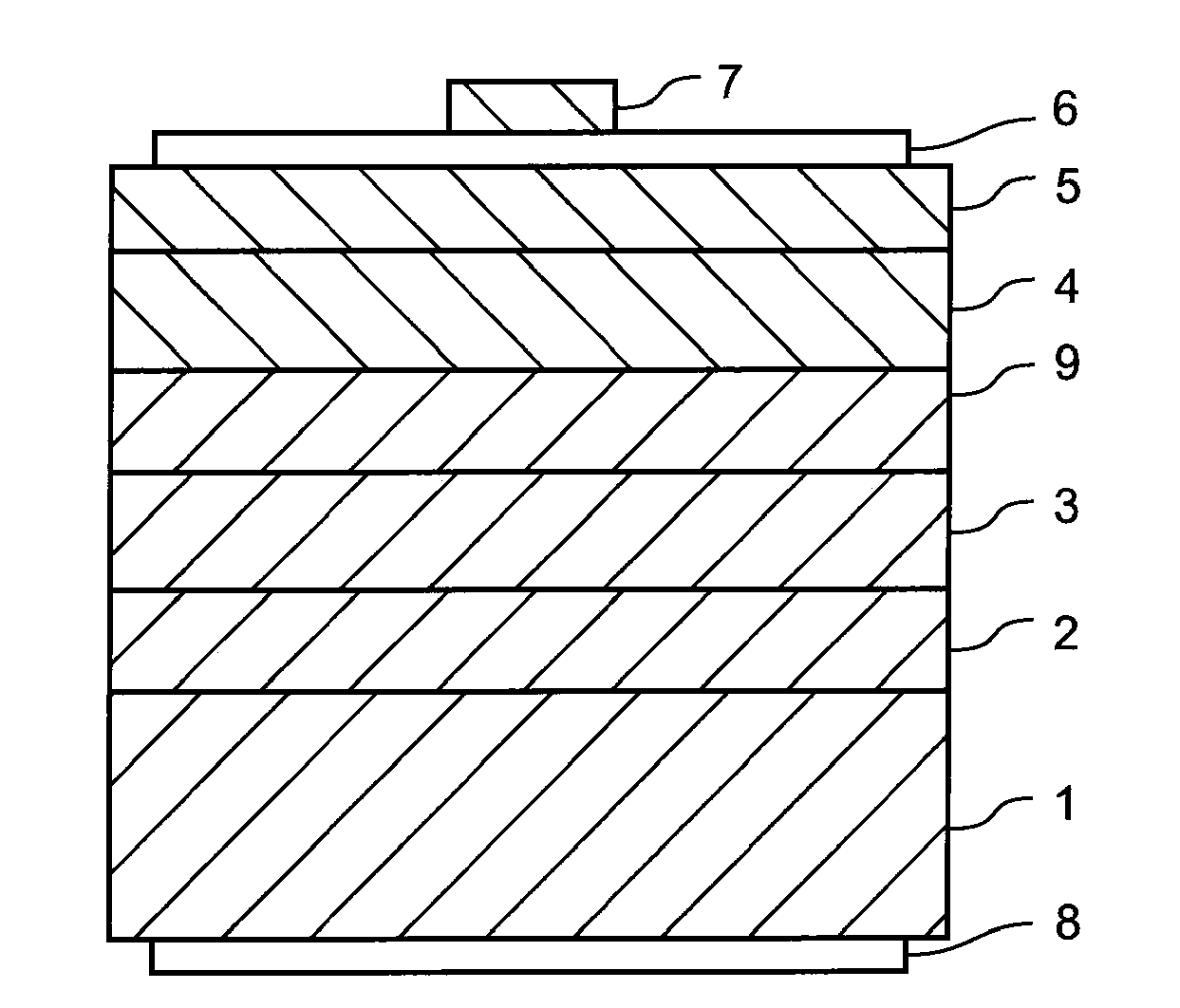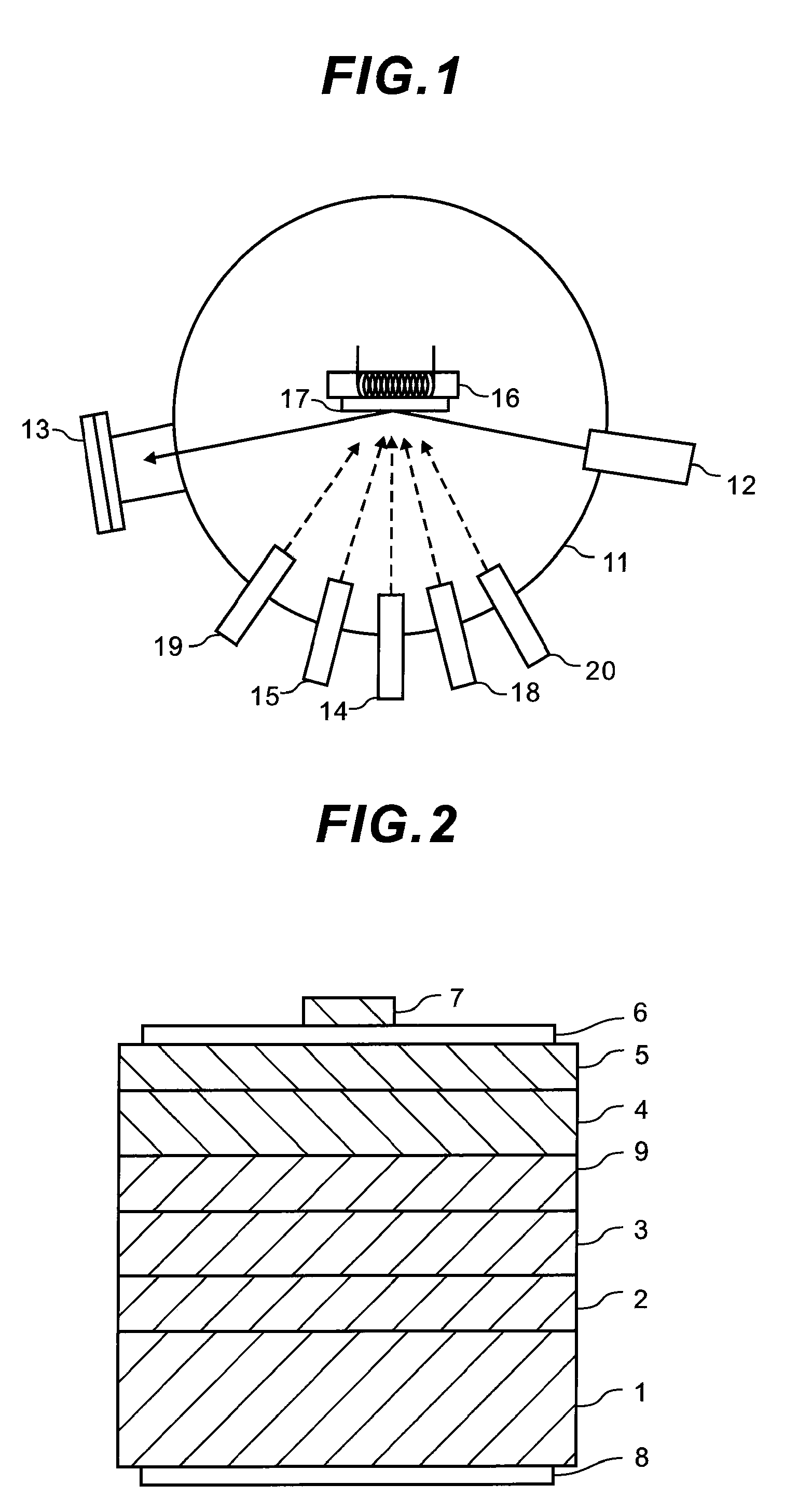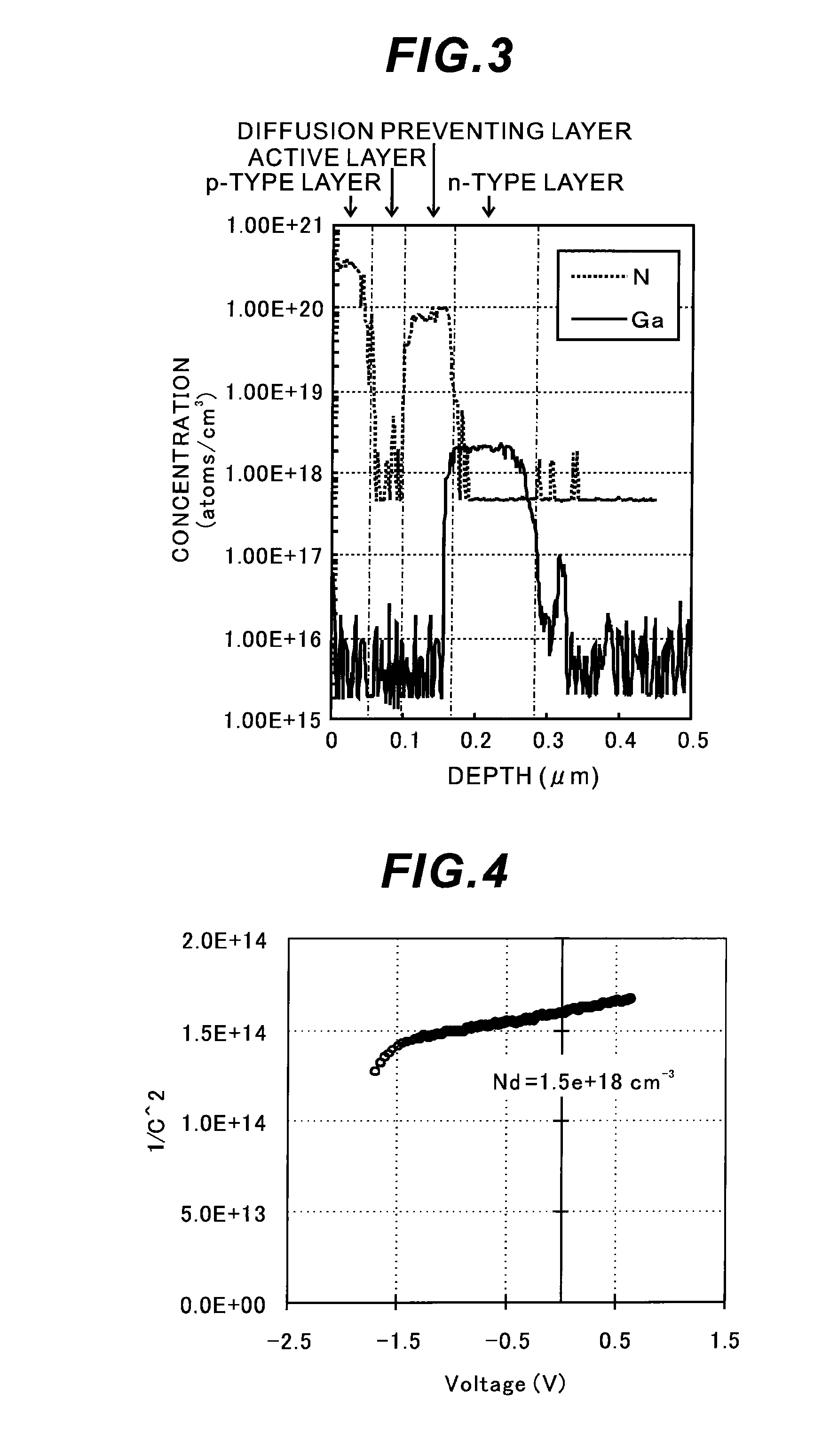Zinc oxide based compound semiconductor device
a compound semiconductor and zinc oxide technology, applied in the direction of semiconductor devices, basic electric elements, electrical appliances, etc., can solve the problems of reducing the crystalline quality of the active layer of a zno based compound semiconductor caused by the diffusion of n-type dopants, and the manufacturing of a high-reliability high-power semiconductor light emitting device, etc., to achieve the effect of preventing the deterioration of the conductivity of the p-type semiconductor layer, reducing
- Summary
- Abstract
- Description
- Claims
- Application Information
AI Technical Summary
Benefits of technology
Problems solved by technology
Method used
Image
Examples
first embodiment
[0066]FIG. 2 is a schematic cross sectional view for explaining a method for manufacturing a ZnO based compound semiconductor device (ZnO based LED) and its structure according to the present invention.
[0067]A device structure and a ZnO based compound semiconductor film according to the first embodiment of the present invention is, for example, manufactured by the molecule beam epitaxy (MBE) method explained with reference to FIG. 1. Moreover, they can be manufactured also by a well-known epitaxial growing method such as a pulsed laser deposition (PLD) method, a metal organic vapor phase epitaxy (MOVPE) method.
[0068]First, a buffer layer 2 is formed on a cleaned +c ZnO substrate 1. A thickness of the buffer layer 2 is preferably about 100 to 300 Å and is grown at 200 to 400 degrees Celsius. Thereafter, an annealing process is performed to improve a quality of the buffer layer 2 at an annealing temperature of 500 to 1000 degrees Celsius for 3 to 30 minutes.
[0069]Next, on a surface of...
second embodiment
[0120]FIG. 7 is a schematic cross sectional view for explaining a method for manufacturing a ZnO based compound semiconductor device (ZnO based LED) and its structure according to the present invention.
[0121]First, a thermal annealing process was performed to a ZnO substrate 1 and a surface of the substrate was cleaned. The thermal annealing process was performed in high vacuum of 1×10−9 Torr at 900 degrees Celsius for 30 minutes.
[0122]Then, a ZnO buffer layer 2 with a thickness of about 10 nm was formed by irradiating the Zn beam and the O radical beam onto the ZnO substrate 1 by heating the substrate temperature at 350 degrees Celsius. Continuously 20 minutes annealing process was performed by rising the substrate temperature to 800 degree Celsius to improve a crystalline quality of the buffer layer 2.
[0123]Next, a Ga—N co-doped n-type ZnO layer 31 was grown on the ZnO buffer layer 2 by simultaneously irradiating the Zn beam, the O radical beam, the Ga beam and the N radical beam ...
third embodiment
[0142]FIG. 11 is a schematic cross sectional view for explaining a method for manufacturing a sample of an n-type ZnO based compound semiconductor layer and its structure according to the present invention.
[0143]Those structures were fabricated by using the MBE method similar to the first and the second embodiments. First, a surface of the substrate 1 was cleaned and the ZnO buffer layer 2 was formed similar to the second embodiment.
[0144]Then, the Ga—N co-doped n-type ZnO layer 31 was grown on the ZnO buffer layer 2 by simultaneously irradiating the Zn beam, the O radical beam, the Ga beam and the N radical beam onto the substrate 1 at the substrate temperature of 900 degrees Celsius. For the irradiation of the Zn beam, 7N purity Zn was used as a solid state source, and the Zn beam flux intensity (JZn) was set to 2×1015 atoms / (cm2 s). The O radical beam was irradiated by introducing 6N purity oxygen gas into the electrodeless discharge tube at 2 sccm and generating plasma at 300 W ...
PUM
 Login to View More
Login to View More Abstract
Description
Claims
Application Information
 Login to View More
Login to View More - R&D
- Intellectual Property
- Life Sciences
- Materials
- Tech Scout
- Unparalleled Data Quality
- Higher Quality Content
- 60% Fewer Hallucinations
Browse by: Latest US Patents, China's latest patents, Technical Efficacy Thesaurus, Application Domain, Technology Topic, Popular Technical Reports.
© 2025 PatSnap. All rights reserved.Legal|Privacy policy|Modern Slavery Act Transparency Statement|Sitemap|About US| Contact US: help@patsnap.com



